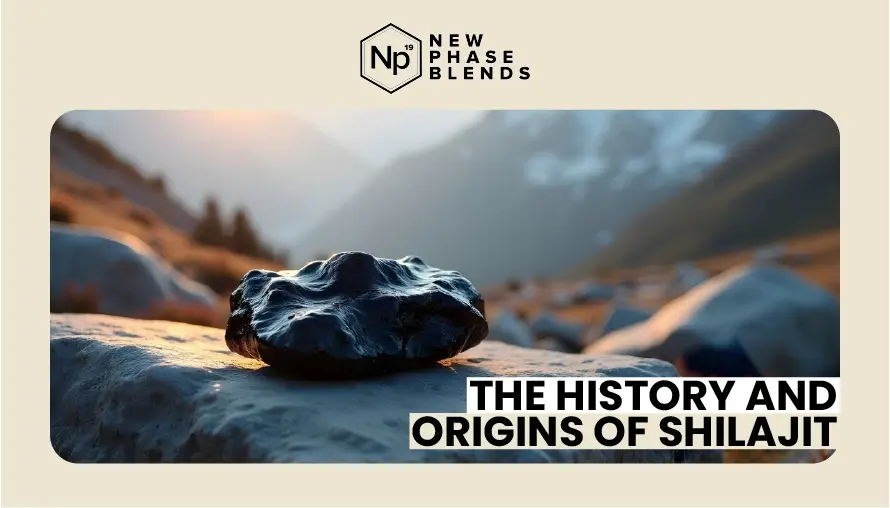Have you ever wondered about the origins of that dark, resin-like substance known as shilajit? This mysterious mountain exudate has been treasured in traditional medicine for centuries, yet many consumers remain unclear about its true nature and formation. Whether you’re considering adding shilajit supplements to your wellness routine or simply curious about this natural phenomenon, understanding its geological origins provides valuable context for making informed decisions.
In this comprehensive guide, we’ll explore the fascinating geological processes behind shilajit formation, clarify misconceptions about its classification, and examine the unique mineralization that gives this substance its remarkable properties. By the end of this article, you’ll have a clear understanding of how shilajit transforms from organic matter into the nutrient-rich resin that’s increasingly popular in modern supplements.
The Geological Origins of Shilajit

The story of shilajit begins deep within the world’s most majestic mountain ranges, where time, pressure, and nature’s chemistry converge to create something truly extraordinary. To understand this substance fully, we must journey through millions of years of geological history and examine the unique conditions that transform simple plant matter into one of traditional medicine’s most revered substances.
The formation of shilajit represents a perfect example of how geological processes can create biological treasures with remarkable properties.
What Exactly Is Shilajit?
Shilajit (also spelled shilajeet) is a blackish-brown substance that exudes from certain mountain rocks during warm weather. While often described simply as a “mineral pitch,” shilajit’s formation is actually a complex process involving both organic and inorganic elements.
The substance is primarily found in the Himalayan, Altai, Caucasus, and other mountain ranges at elevations between 1,000 and 5,000 meters.
Read more: What is Shilajit?
The Transformation Process: How Is Shilajit Formed?
Shilajit formation begins with vegetation—primarily medicinal herbs and plants that grow in mountainous regions. The formation process unfolds through several distinct stages:
Stage 1: Plant Decomposition
The process begins with living plants growing in high-altitude mountain regions. These plants include species like Euphorbia royleana, Trifolium repens, and various mosses and lichens. Over time, these plants die and begin to decompose in the mountain soil.
Stage 2: Microbial Transformation
As plant matter decomposes, it undergoes transformation by various microorganisms. This microbial activity is crucial as it begins breaking down complex plant compounds into more bioavailable forms. During this stage, the decomposing matter becomes increasingly humic-rich.
Stage 3: Geological Compression
Over centuries, geological forces compress this decomposed plant matter deep within mountain crevices and between rock layers. The immense pressure, combined with the region’s unique mineral composition, begins to transform the organic matter into a resin-like substance.
Stage 4: Humification and Mineralization
The compressed organic material undergoes humification—a process where plant matter transforms into humic substances. Simultaneously, mineralization occurs as the organic matter absorbs minerals from surrounding rocks. This dual process creates shilajit’s unique composition of fulvic acid, humic acid, and various minerals.
Stage 5: Exudation
Finally, seasonal temperature changes cause the resin to slowly exude from between rock layers. When mountain temperatures rise during summer months, the substance softens and seeps out from rock crevices where it can be harvested.
This entire formation process spans hundreds to thousands of years, making shilajit a truly ancient substance.
Is Shilajit a Rock?
No, shilajit is not simply a rock. One common misconception is that shilajit is simply a type of rock or mineral. This confusion is understandable given its appearance and the fact that it’s often found exuding from between rock layers.
However, shilajit is not technically a rock. Instead, it’s more accurately described as a paleobiogenic substance—a material formed through the transformation of ancient biological matter combined with geological processes. It represents a unique intersection of organic and inorganic elements.
Shilajit is an Organic-Mineral Hybrid
What makes shilajit particularly fascinating is its hybrid nature. While not a rock itself, its formation is intimately connected to rock formations. The substance contains:
- Organic components derived from decomposed plant matter (50-60%)
- Mineral constituents absorbed from surrounding rocks (30-40%)
- Water content and trace elements (10-15%)
This composition places shilajit in a category of its own—not quite a rock, not purely organic, but rather a natural substance that bridges both worlds.
The Mineralization Process of Shilajit
The mineralization of shilajit represents one of the most important aspects of its formation. As the decomposing organic matter rests between rock layers, it gradually absorbs minerals from its surroundings through a process similar to natural leaching.
The specific mineral content varies depending on the geographical location and rock composition of the formation site. This explains why shilajit from different regions (Himalayan vs. Altai, for instance) can have varying mineral profiles.
Key Minerals Found Within Shilajit
Through this long-term mineral exchange with surrounding rocks, shilajit becomes enriched with numerous beneficial minerals:
- Fulvic acid (a key component that enhances mineral absorption)
- Iron
- Zinc
- Magnesium
- Potassium
- Calcium
- Manganese
- Phosphorous
- Selenium
These minerals, combined with the transformed plant compounds, contribute to shilajit’s reported health benefits and explain why it’s valued in traditional medicine systems.
Environmental Factors Affecting Shilajit Formation
The formation of high-quality shilajit depends on specific environmental conditions:
- Altitude: Typically forms at elevations between 1,000-5,000 meters
- Temperature fluctuations: Requires seasonal variations to facilitate the exudation process
- Humidity levels: Moderate humidity supports the decomposition and transformation processes
- Sunlight exposure: Limited direct sunlight helps preserve the bioactive compounds
These specific requirements explain why genuine shilajit is found only in certain mountain ranges around the world and why it commands premium prices in the supplement market.
From Mountain to Market: Harvesting and Processing

The journey of shilajit doesn’t end with its formation in the mountains—this is merely where its human story begins. The process of bringing this ancient resin from remote mountain crevices to supplement shelves involves centuries-old harvesting wisdom combined with modern quality standards.
Understanding this transition helps explain both the authenticity challenges in the market and why genuine shilajit commands respect from knowledgeable consumers. Let’s trace the path this remarkable substance takes from its rocky mountain home to the finished products available today.
Traditional Harvesting Methods of Shilajit
The harvesting of natural shilajit remains largely a manual process. Experienced collectors identify locations where the substance exudes from rocks during warmer months and carefully scrape the resin. This labor-intensive process contributes to authentic shilajit’s relatively high cost.
Modern Shilajit Processing Techniques
Once harvested, raw shilajit undergoes several processing steps before becoming the supplement you might purchase:
- Purification to remove physical impurities
- Filtering to ensure safety and consistency
- Testing for contaminants and standardization of active compounds
- Concentration to enhance potency
- Formulation into capsules, powders, or resins
Understanding this journey from geological formation to finished supplement helps consumers appreciate the unique nature of this substance and make informed choices when selecting shilajit products.
Conclusion
The formation of shilajit represents a remarkable convergence of botanical decomposition, microbial transformation, geological pressure, and mineral enrichment spanning centuries. This complex, natural process creates a substance that isn’t simply a rock but rather a unique paleobiogenic material with a distinct mineral-organic composition.
For those considering shilajit supplements, understanding its natural formation provides important context about its origin, composition, and potential benefits. The knowledge that genuine shilajit forms through an extensive natural process helps explain both its historical value in traditional medicine systems and the growing interest in its applications for modern health supplements.
As research continues to explore shilajit’s properties, this ancient substance—formed through remarkable geological processes—continues to bridge traditional wisdom and contemporary wellness approaches.






















